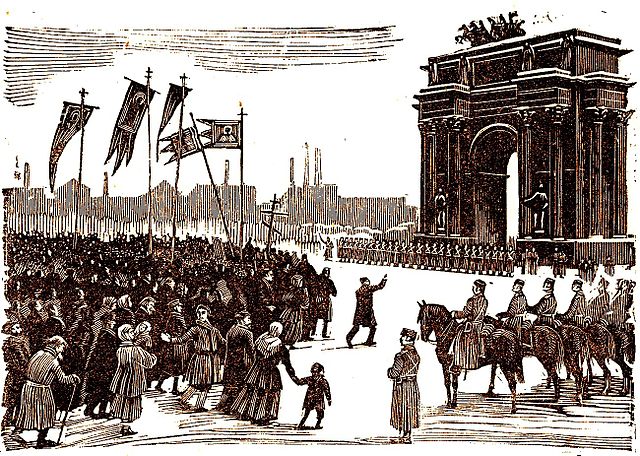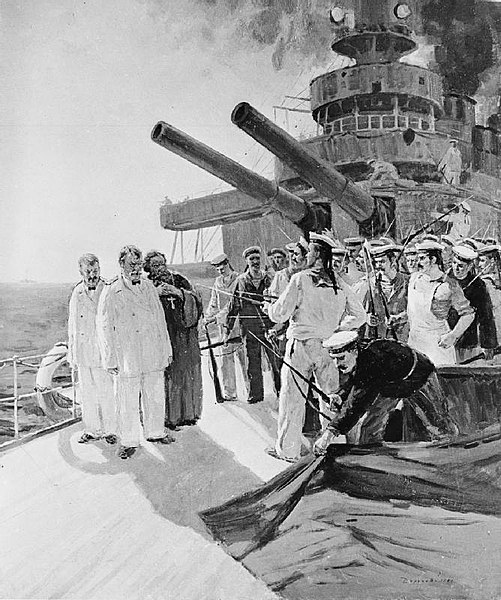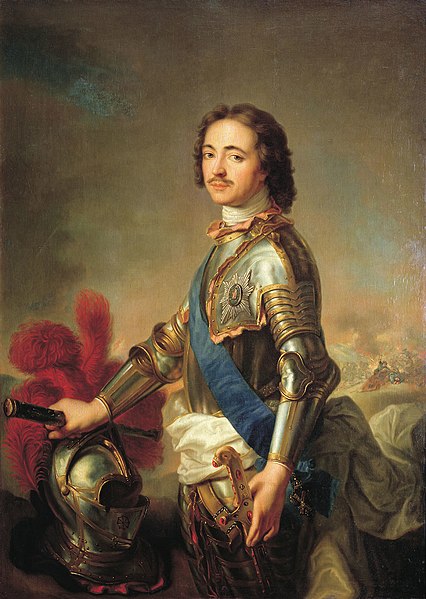Russian Revolution of 1905
The Russian Revolution of 1905, also known as the First Russian Revolution, began on 22 January 1905. A wave of mass political and social unrest then began to spread across the vast areas of the Russian Empire. The unrest was directed primarily against the Tsar, the nobility, and the ruling class. It included worker strikes, peasant unrest, and military mutinies. In response to the public pressure, Tsar Nicholas II was forced to go back on his earlier authoritarian stance and enact some reform. This took the form of establishing the State Duma, the multi-party system, and the Russian Constitution of 1906. Despite popular participation in the Duma, the parliament was unable to issue laws of its own, and frequently came into conflict with Nicholas. The Duma's power was limited and Nicholas continued to hold the ruling authority. Furthermore, he could dissolve the Duma, which he did three times in order to get rid of the opposition.
Demonstrations before Bloody Sunday
Troops in St. Petersburg
Artistic impression of Bloody Sunday in St. Petersburg
Artistic impression of the mutiny by the crew of the battleship Potemkin against the ship's officers on 14 June 1905
The Russian Empire, also known as Imperial Russia or simply Russia, was a vast realm that spanned most of northern Eurasia from its proclamation in November 1721 until its dissolution in March 1917. At its height in the late 19th century, it covered about 22,800,000 square kilometres (8,800,000 sq mi), roughly one-sixth of the world's landmass, making it the third-largest empire in history, surpassed only by the British and Mongol empires; it also held colonies in North America between 1799 and 1867. The empire's 1897 census, the only one it conducted, found a population of 125.6 million with considerable ethnic, linguistic, religious, and socioeconomic diversity.
The Victory at Poltava, painted by Alexander von Kotzebue in 1862
Peter the Great officially proclaimed the Russian Empire in 1721 and became its first emperor. He instituted sweeping reforms and oversaw the transformation of Russia into a major European power. Painting by Jean-Marc Nattier, 1717.
Empress Catherine the Great, who reigned from 1762 to 1796, continued the empire's expansion and modernization. Considering herself an enlightened absolutist, she played a key role in the Russian Enlightenment (painted in the 1780s).
1764, Rouble Catherine II ММД - Krasny Mint








